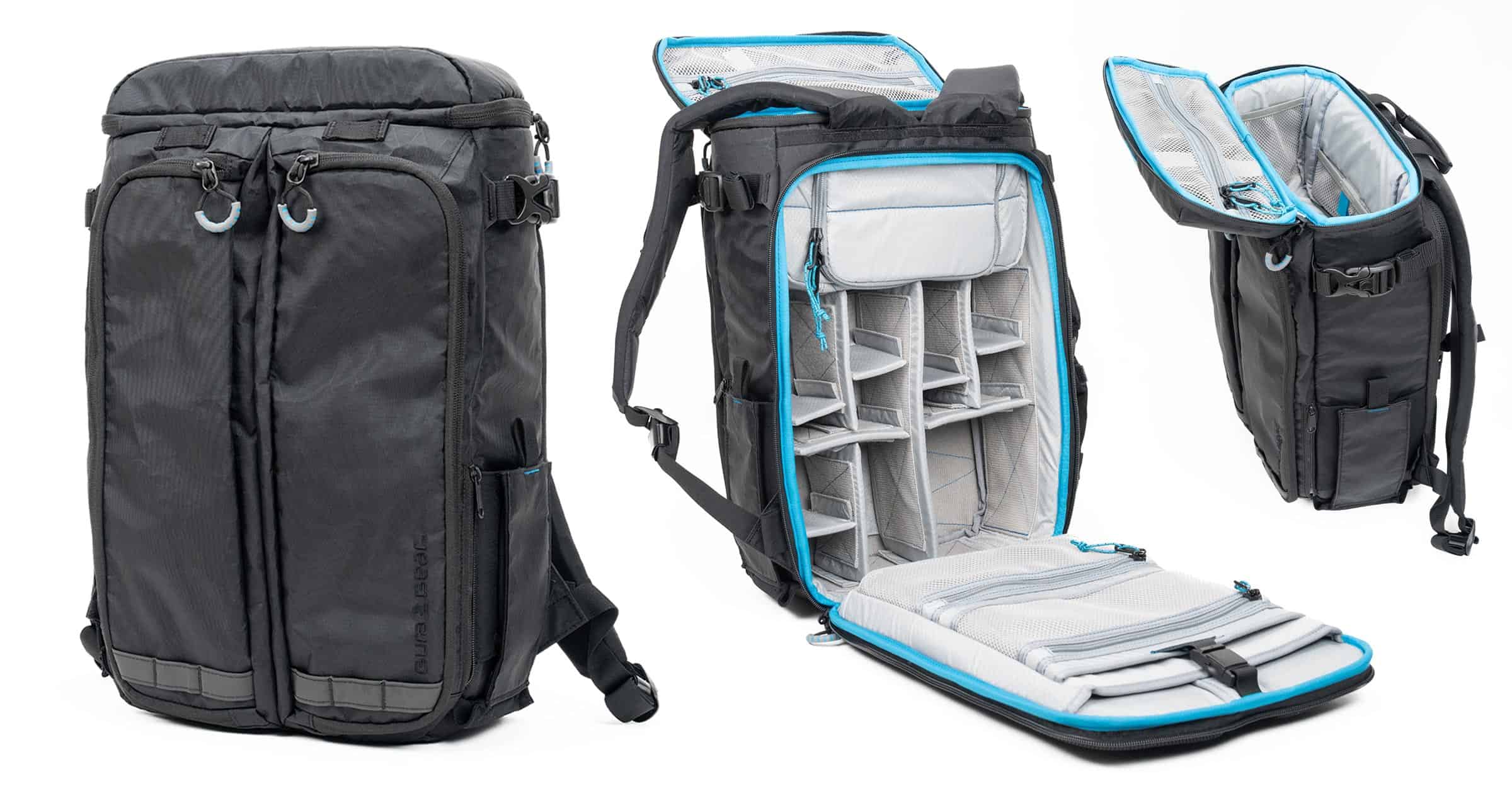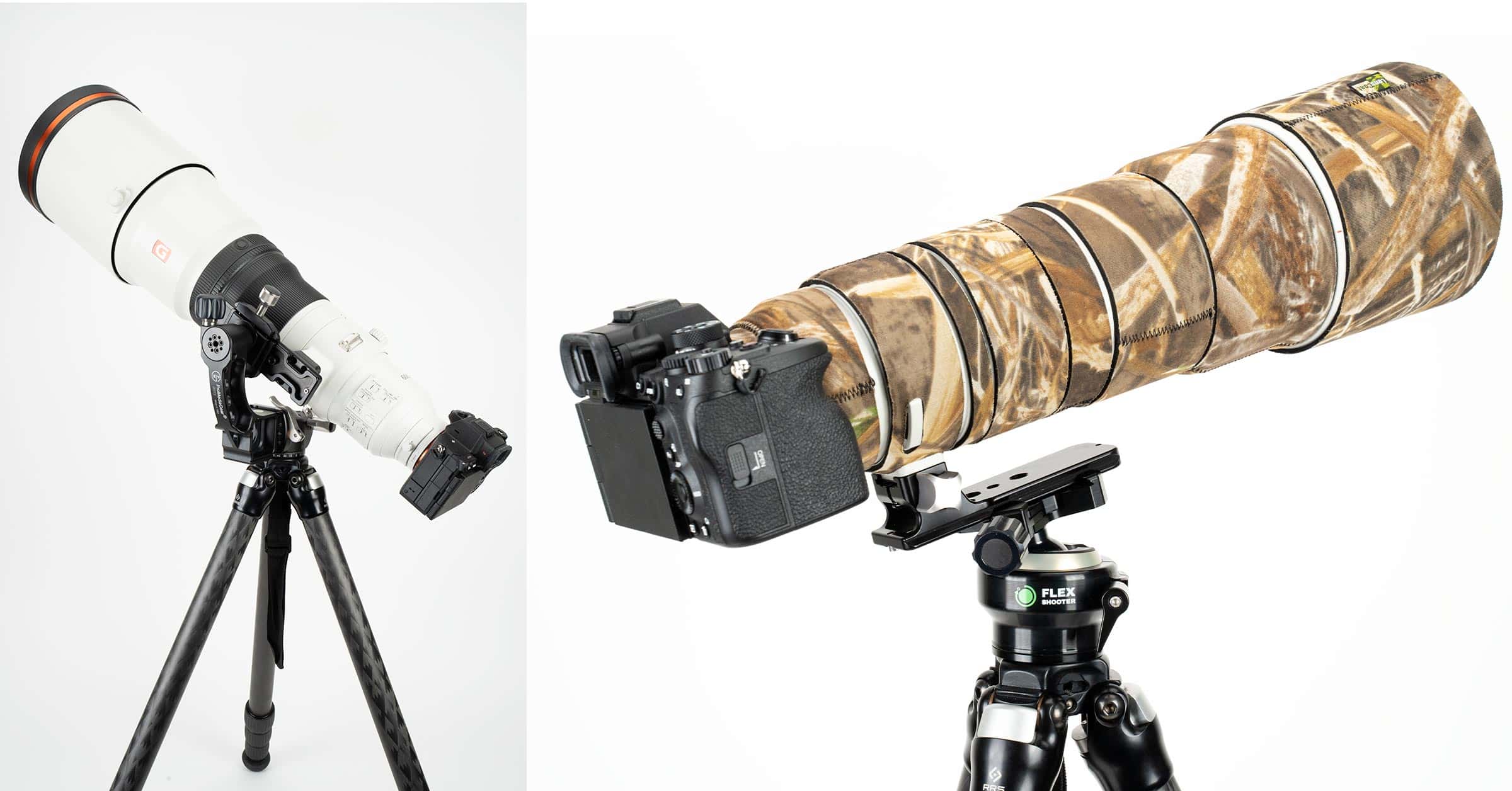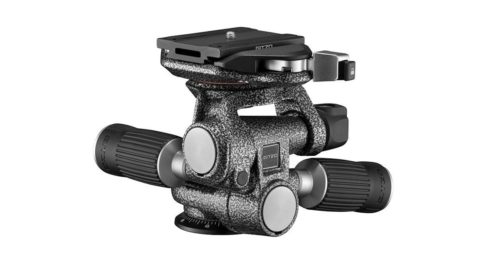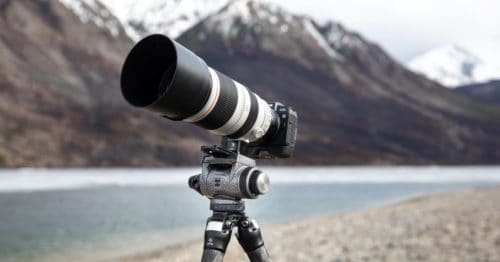Choosing the correct type of tripod head for the job is critical. Using the wrong head – something that many people do – can ruin your photos. On the other hand, choosing the right tripod head can instantly improve your photography, making it easier to create the kinds of images you have always dreamed of. They’ll be sharper, too!
In this guide, I will walk you through every type of tripod head and explain when you should use each one. By the time you have finished, you’ll understand exactly which head you need for your favorite photography genre, whether you’re a landscape, wildlife, macro, architectural, or travel photographer. Or whether you like to photograph people, sports, or just your own family. For still photos or videos, there’s something for everyone.
Table of Contents
Ball Head
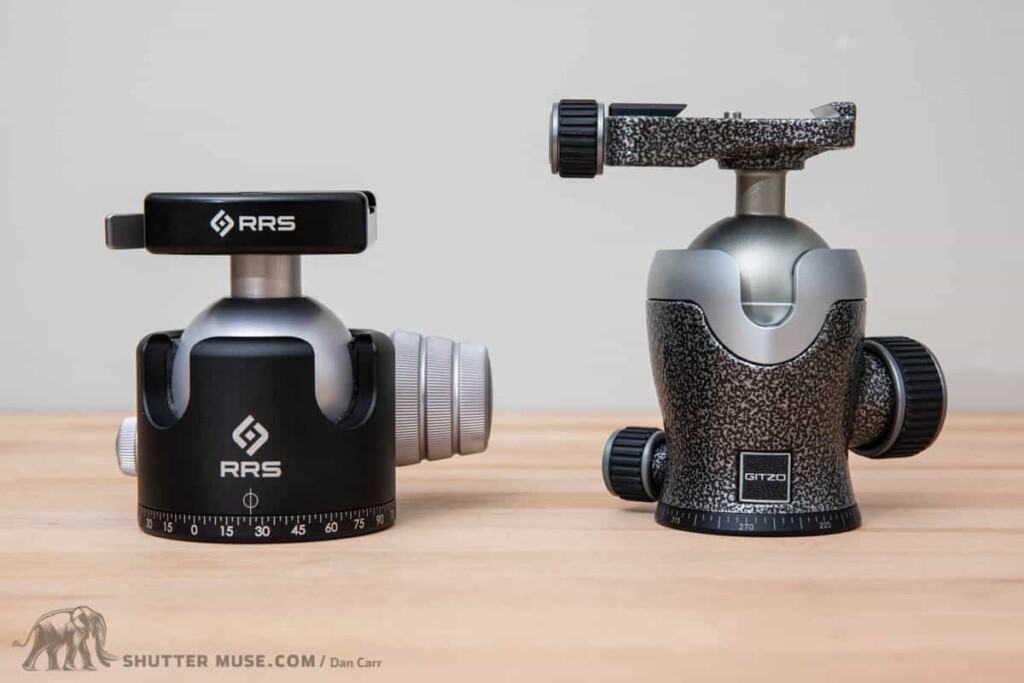
- Best For: Landscape photography and general use
- Pros: Wide range of movement, versatile
- Cons: Difficult to use with collared telephoto lenses while shooting sports or wildlife
Ball heads are the most popular type of tripod head. A ball head features a main locking knob that loosens the head’s grip on a central ball. Once loosened, an attached camera can tilt, pan, and roll in any direction. Many ball heads also feature a panning base that allows a camera to be panned horizontally 360 degrees after the ball has been locked. This is useful for panoramic photos and tweaking your composition slightly to the left or right once the ball has been locked. On those ball heads, such as the RRS and Gitzo examples in the photo, the panning base is locked by a dedicated pan-locking knob.
Ball heads also feature at least one U-shaped cutout called a 90-degree drop-notch. Placing the ball neck into the drop-notch allows you to position the camera at 90 degrees to shoot photos in portrait orientation. The range of motion a ball head offers makes it incredibly versatile and a good choice for photographers who enjoy various photography genres.
Having said that, there are often far better choices for those specializing in one type of photography. I created this guide because many specialists, such as wildlife photographers, are not using some of these vastly superior tripod head types out of ignorance of their existence. So, with that in mind, please read on to see what you might be missing.
Gimbal Head
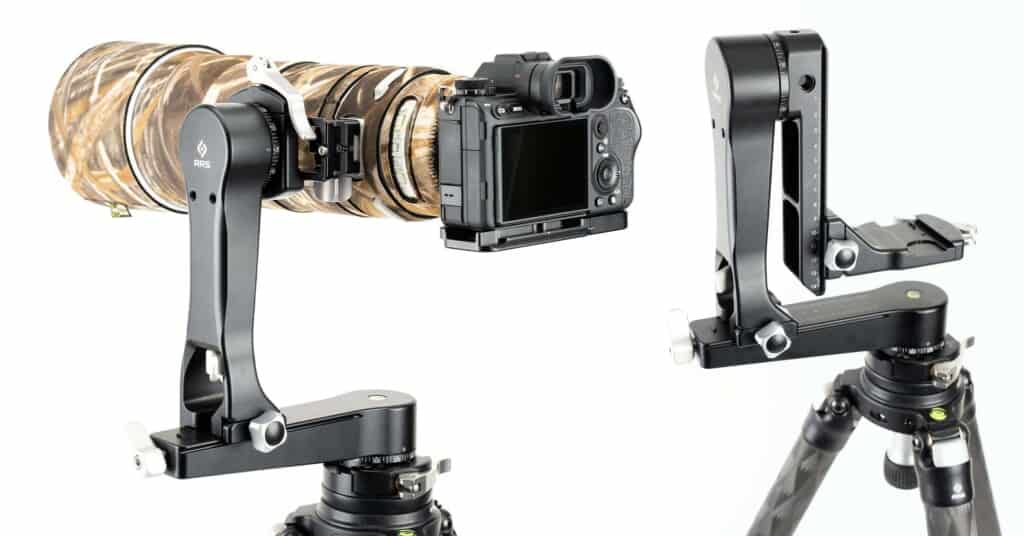
- Best For: Wildlife photography with a telephoto lens
- Pros: Makes your camera feel weightless, always ready to shoot
- Cons: Bulky to carry, heavy
A gimbal gimbal head like a Wimberley is a style of 2-axis tripod head that offers independent control and locking of the pan and tilt movement. Gimbals are designed for use with telephoto lenses and, combined with an Arca Swiss dovetail plate on your lens foot, allow you to adjust the fore/aft position of your camera and lens so that it is perfectly balanced. Once balanced, moving a heavy telephoto lens feels effortless, and there is no need to lock the gimbal head while you wait for your subject to appear. Tilt and pan are controlled by the gimbal’s movement, while the roll axis–your horizon line–is controlled by rotating your telephoto lens in its lens collar.
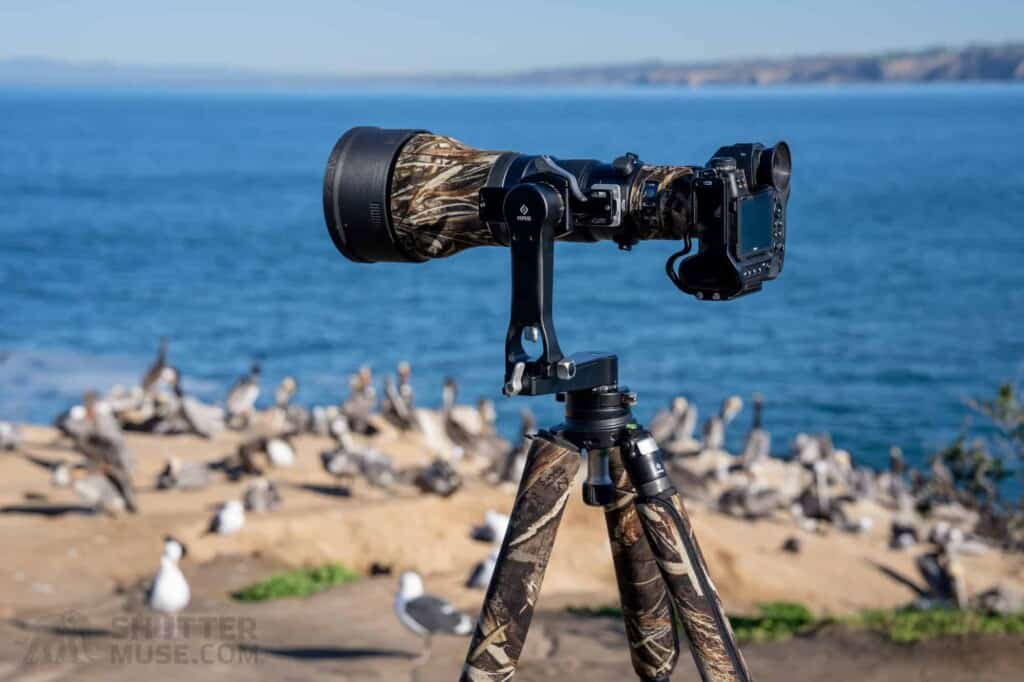
Gimbal heads are most popular with wildlife photographers who use heavy lenses and often have to wait in one position for an extended period. The fact that you can go hands-free from your camera once the gimbal is perfectly balanced means it is always ready and waiting for the action. No fussing with locking knobs is necessary unless, of course, you are moving from one location to another. My guide to choosing the best gimbal head discusses the pros and cons of the two gimbal head variations–cradle and side mount. I have a strong preference for side-mount gimbals these days.
Monopod Head / Tilt Head
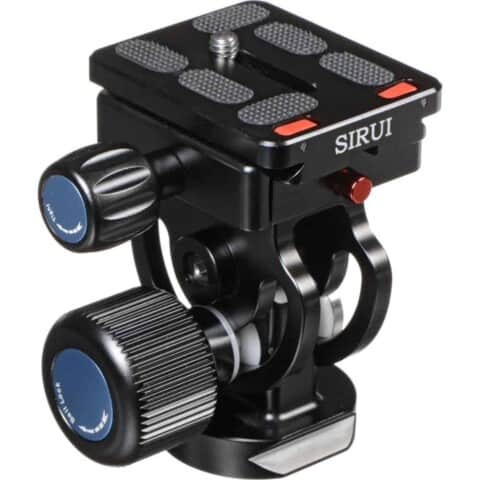
- Best For: Sports and wildlife photography on the move with telephoto lenses
- Pros: Easier to shoot at an incline or decline with super-telephoto lenses
- Cons: Limited usefulness aside from using it on a monopod. Most people must also buy another head for general use and landscapes.
Monopod heads, sometimes called tilt heads, offer movement along a single axis when the locking knob is released. Tilt heads are usually used on a monopod and combined with a telephoto lens with a lens foot. When the lens foot is attached to the tilt head parallel to the tilt head’s axis of movement, you can tilt the lens up or down while keeping a monopod vertical. This is useful when shooting up or down at a steep angle using a monopod. Without it, shooting up at a steep angle would require you to crouch awkwardly, and shooting down at a steep angle is usually impossible.
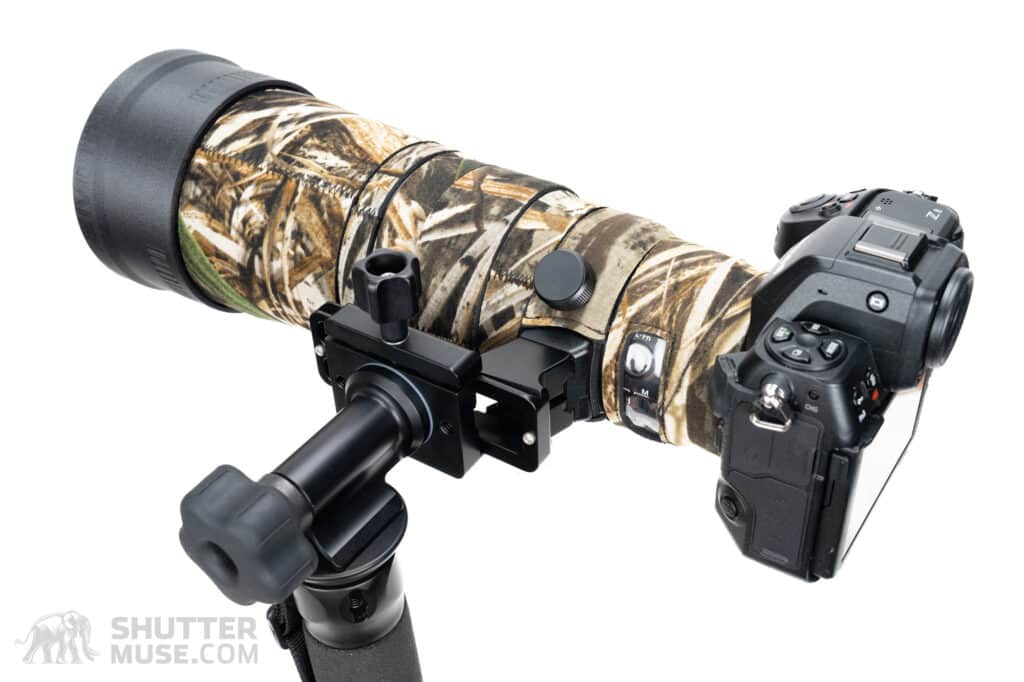
Monopods are often used by sports and wildlife photographers who want to maintain freedom of movement while still supporting heavy telephoto lenses. Since most sports photographers work on flat ground along the sidelines of a sporting event, monopod heads are often unnecessary. However, wildlife photographers often find them useful for photographing animals and birds up in trees or working the angles on a subject that lives in a hilly environment. Check out my guide to the best monopod heads to see which suits you best.
2-Way Tilt Head
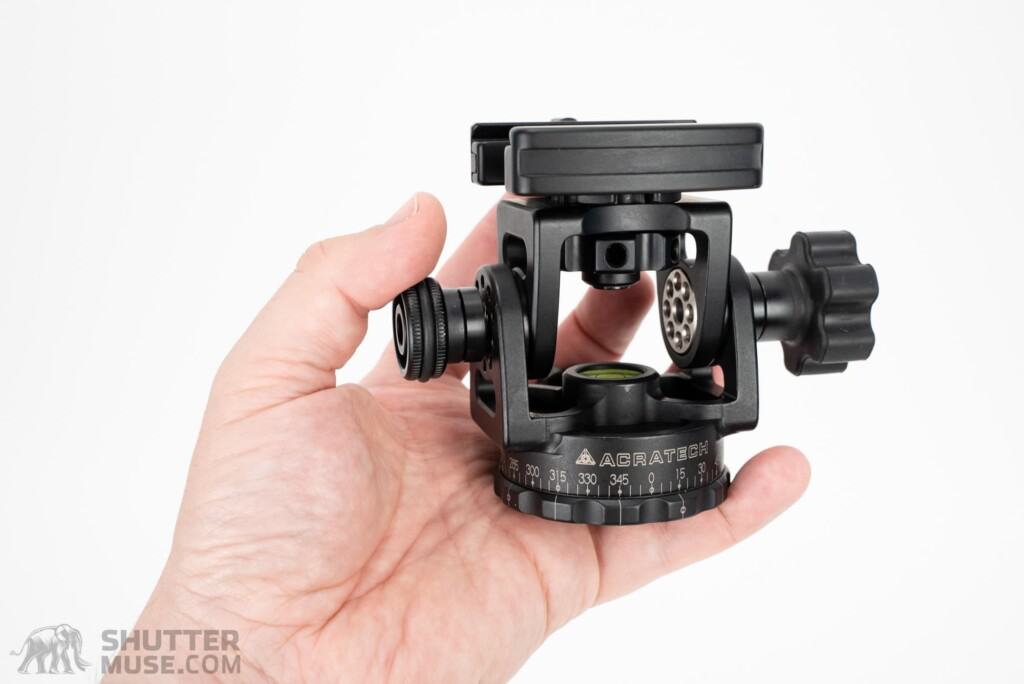
- Best For: Telephoto lenses on a tripod when a gimbal is too bulky or heavy. Landscape photography when paired with a leveling base and an L bracket.
- Pros: Lightweight, can also be used as a monopod head
- Cons: Not as smooth as a gimbal for wildlife. Not as fast as a ball head for landscapes.
As we discussed, tilt heads move on a single axis. The camera can be tilted forward or backward on that axis when you unlock them. Some tilt heads also include a panning base. This panning base has a separate locking knob and allows you to rotate the camera 360 degrees, just like the panning base on a ball head. Tilt heads with both fore/aft tilt and a panning base are called 2-way heads or 2-way tilt heads.
A great example of a 2-way tilt head is the previously reviewed Acratech tilt head shown in the photo above. At first glance, it looks like a monopod or a regular tilt head. However, a closer look reveals the laser-etched degree markings on the base that indicate the possibility of horizontal rotation.
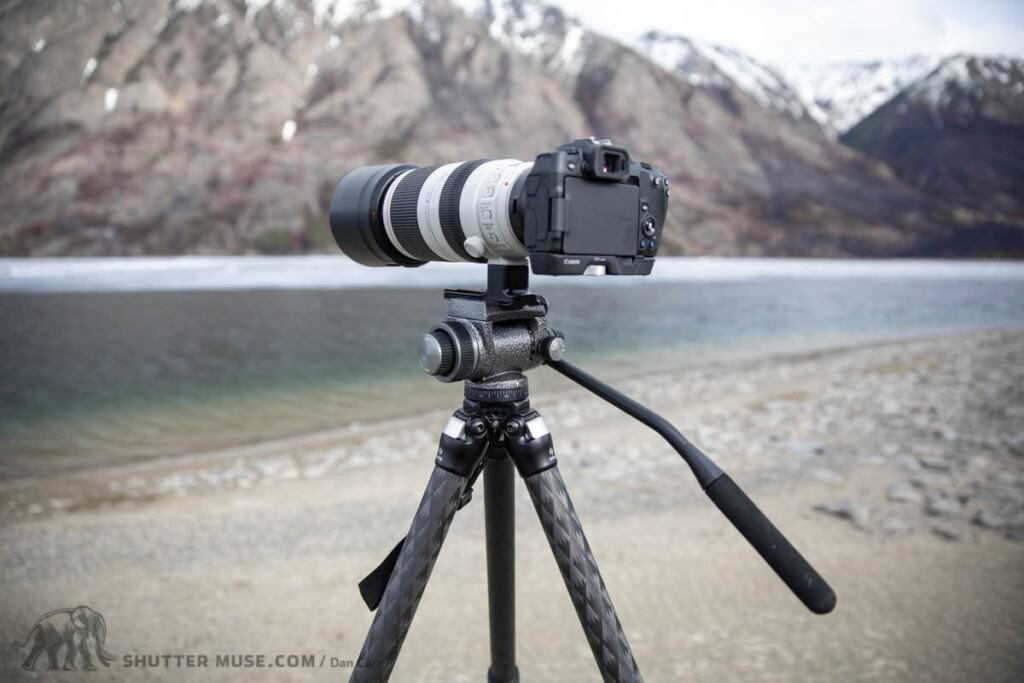
Sometimes, small video tripod heads are called 2-way heads because they operate on two axes. Although this might seem confusing, video tripod heads are easily distinguished by the presence of a pan bar to help create a smooth panning motion. These smaller 2-way video heads are most popular among beginner videographers and birders using spotting scopes or high-powered binoculars. If this sounds like the head for you, check out my review of the Gitzo 2-Way head. It’s a great option.
3-Way Pan & Tilt Head
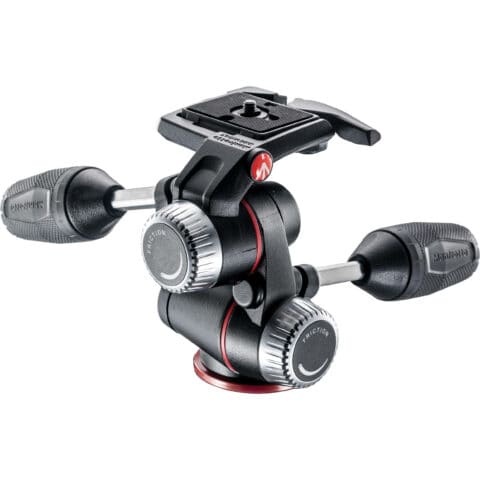
- Best For: Slow paced landscape and studio photography
- Pros: Pan, tilt, and roll can be adjusted independently
- Cons: Slower to use than a ball head
Ball heads are useful for quickly repositioning a camera in almost any direction. When unlocked, they can pan, tilt, and roll the camera in any direction. Some people love the speed at which you can alter your composition with a ball head, but others find a more measured approach to compositional changes more suitable. For those people, a 3-way pan-and-tilt head is the answer. A pan-and-tilt head, sometimes called a 3-way head, features individual locking controls for each axis of movement, allowing you to dial in a more precise composition.
Have you ever composed a landscape photo using a ball head and got the framing of your left and right edges just right and your horizon perfectly level, only to realize that you’d like to tilt the camera up or down a little more? If so, you’ve probably experienced the frustration of trying to make that minor tilt adjustment only to accidentally throw off your horizon or your frame’s edges. That is the problem with a ball head, where a single locking knob controls all movements.
A 3-way head like the Manfrotto XPRO solves this problem, allowing you to make a small tilt adjustment without affecting the horizon line or the camera’s panning position. Of course, any combination of these movements is possible. If the sides of the frames are perfect and the tilt angle is just right, but you need to make a small adjustment of the roll angle to level your horizon, unlock that axis and give it a tweak.
The downside to 3-way heads is that composition is slower than with a ball head, and they are bulkier and generally heavier than comparably capable ball heads. Unlike other heads on this page that are more suitable for specific photography genres, whether a pan-and-tilt head is right for you often depends on personal preference. Those who prefer a more systematic approach to composition and like to take the time to watch a scene unfold in the light usually enjoy using these heads. Those who want to move quickly and capture multiple angles of a scene before the light changes do not get on so well with a 3-way head.
Evidently, the slower-speed approach to composition with a 3-way head does not lend itself to fast-paced action such as sports and wildlife photography. Nor do the 3-way head designs work well with heavy telephoto lenses. Pan-and-tilt heads are best used for Landscape, macro, and studio photography.
Fluid Head / Video Head
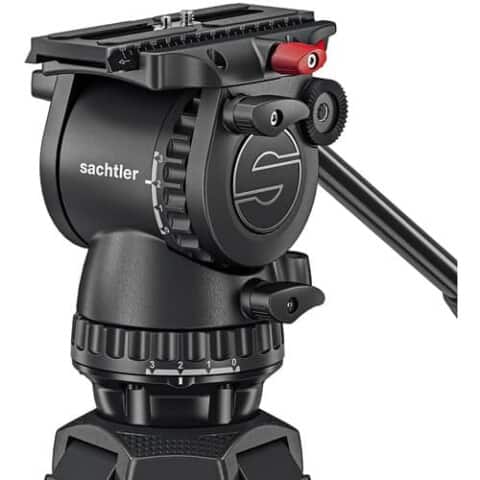
- Best For: Video shooting
- Pros: Creates smooth pan and tilt movements while recording videos
- Cons: Heavy, bulky, and not useful for much else other than shooting videos
Fluid heads are unique 2-way heads that tilt up and down and pan exceptionally smoothly. They are mainly used to shoot videos. These fluid heads, sometimes called video heads, also contain a spring-loaded counterbalance mechanism that acts against the weight of your camera to hold the head in position while tilted up or down without the need to use the tilt lock. Video heads are labeled with a capacity range to let you know the range of camera weights that can be counterbalanced.
Fluid head mechanisms can be loosely grouped into two types. Cheaper fluid heads–and, to be clear, these can still cost hundreds of dollars–use a series of concentric metal rings covered in silicone grease. The greased movement of the metal rings sliding past each other provides the smooth feeling associated with video heads.
More expensive fluid heads–perhaps these should be called true fluid heads–force a viscous fluid through a complex system of valves and apertures when the head is panned or tilted. Imagine, if you will, pressing down on the plunger of a syringe filled with a viscous fluid. The action of forcing the fluid out of the syringe’s small aperture modulates the speed and smoothness of your action. A proper fluid video head works on the same principles, with a user-variable aperture altering the pan and tilt friction. Expect to pay thousands of dollars to get a head like this using a proper fluid cartridge.
Geared Tripod Head
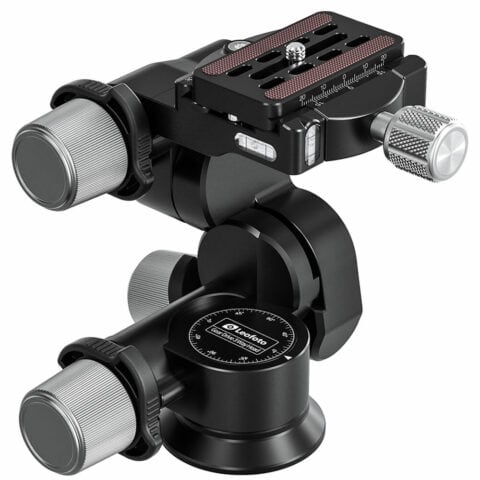
- Best For: Architectural and macro product photography
- Pros: Allows extremely precise adjustment of composition
- Cons: Slow to use, and good ones are costly.
Geared heads such as the Leofoto GW-01 or the venerable Arca Swiss C1 Cube head are the ultimate precision instruments. These 3-axis heads feature independent pan, tilt, and roll control. Unlike any other tripod head, the movement of the head in each direction is controlled by fine rotations of a control knob. Gears inside the head convert the rotation of the control knobs into the slow, precise movement of the chosen axis. Laser-etched degree markings on each axis show precisely how far you are moving your camera. Moreover, geared tripod heads do not need to be locked. An action that can cause small compositional changes when using other types of tripod heads.
Geared tripod heads are not as quick to use as ball heads. Still, the precise nature of their movement lends itself to use in architectural photography, where vertical lines must be precisely composed, often in conjunction with the movement of a tilt-shift lens. They are also popular in photo studios, where you can take a little more time to compose the perfect shot. Geared tripod heads are complex and often heavier and bulkier than ball heads.
Leveling Head
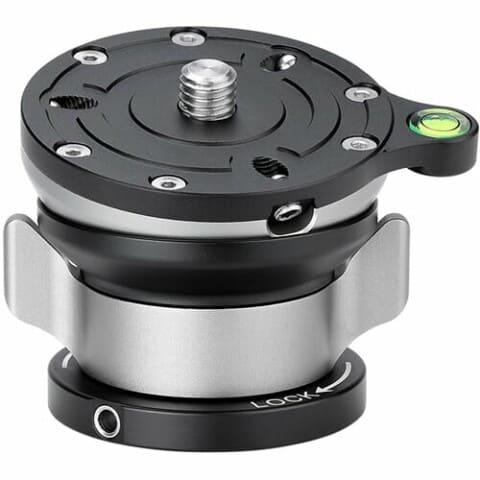
- Best For: Pairing with a gimbal for wildlife photography or pairing with a ball head for panoramic photography.
- Pros: Faster to achieve a perfectly level horizon
- Cons: Serves no use on its own
A leveling head, sometimes called a leveling base, sits on your tripod beneath your main tripod head. As the name suggests, this head allows you to level your main tripod head when you need the panning base of your tripod head to be perfectly level. While you can level a tripod head by adjusting the length of your tripod’s legs, anyone who has done this in the field knows it can be finicky and time-consuming to get perfectly right. If the light or your subject is moving fast, you may miss the shot if you work that way.
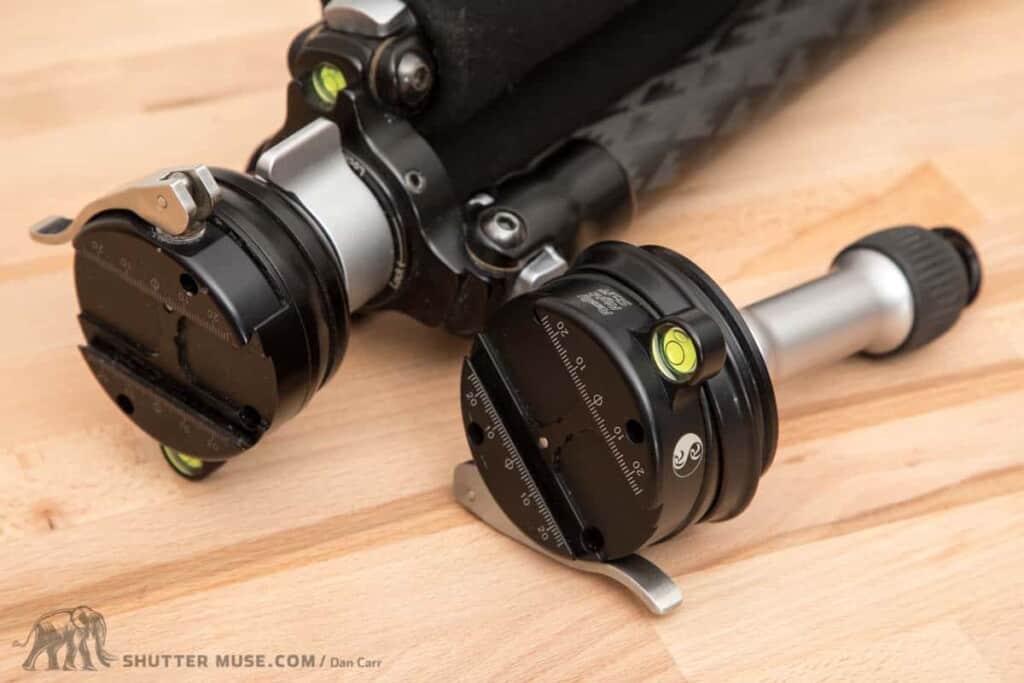
When you have a leveling head installed on your tripod, you only need to get the tripod legs in the right ballpark, and the leveling head takes care of the final leveling precision. A good leveling head will always have a bubble level, ensuring a perfectly level platform for your main tripod head to sit on.
There is no need for a leveling head if you are shooting single-shot landscape photos with a ball head. However, leveling heads help create stitched panoramas that require a perfectly level horizon from one shot to the next. Your panorama will have a curved horizon if the ball head’s panning base is not level. Leveling heads are also helpful when using a gimbal or a fluid video head. Without a perfectly level panning platform, rotating a gimbal or video head will cause the horizon to tilt off the horizontal as you pan.
Pistol Grip Ball Head
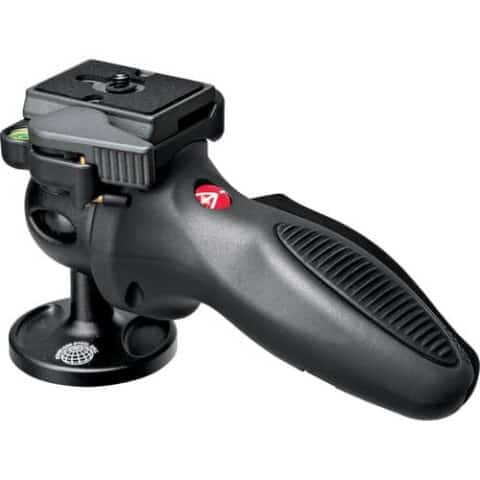
- Best For: People with arthritis in their hands or amputees
- Pros: Easy to unlock the ball and reposition camera
- Cons: No panning base for panoramic photography
Pistol grip tripod heads, sometimes called joystick heads, work like regular ball heads, but instead of using a rotating knob to unlock the ball’s movement, they use a large trigger on a pistol-like grip. If you have arthritis in your hands or any other ailment that would make rotating a small knob difficult, particularly in cold weather, a pistol grip tripod head can be the answer.
Another benefit to the pistol grip ball head is that unlocking and moving the camera can be done simultaneously with one hand. A regular ball head requires you to unlock the ball with one hand while repositioning it with a second hand. If you have a disability the affects your range of motion with one of your hands, a pistol grip head will help you compose your shots with the other hand.
Inverted Ball Head
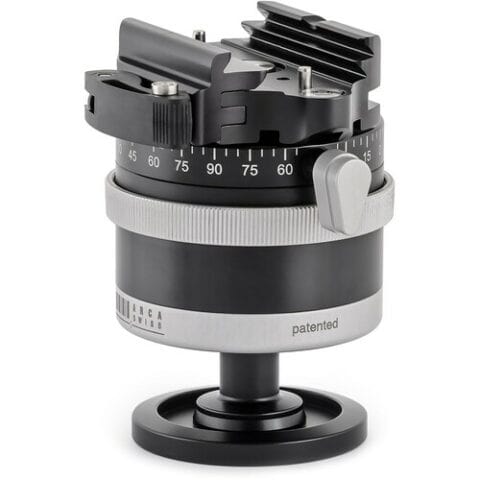
- Best For: Panoramic landscape photography
- Pros: Creates a level panning platform without needing a leveling base
- Cons: The head’s weight sits above the ball, so when it is unlocked for repositioning, it can feel heavier and harder to control.
Inverted ball heads like the Arca Swiss Monoball P0 place the panning base above the ball instead of below it like a standard ball head. This orientation negates the need for a leveling base when shooting stitched panoramas. When you aren’t shooting a panorama, an inverted ball head can be used in all the same ways as a regular ball head, providing a huge range of motion and a 90-degree drop-notch to switch to a portrait orientation.
When you need to shoot a panorama with a perfectly level horizon, the process is like using a leveling head. In reality, an inverted ball head is just a leveling head with a much more comprehensive range of motion. In this case, you would roughly level your tripod legs, then use the inverted ball head to perfectly level the tripod clamp and panning base. This ensures that the horizon remains horizontal as you pan the camera to take each shot in the panorama.
Just as using a leveling head beneath a ball head, using an inverted ball head for panoramic photography is purely a matter of speed and convenience. You can always achieve a level panning platform by meticulously adjusting the length of each tripod leg. Adjusting the tripod legs is probably a fine solution if you only take a handful of panoramic photos a year. However, this is a great upgrade if you’re serious about your panoramic work.
Flexshooter Heads
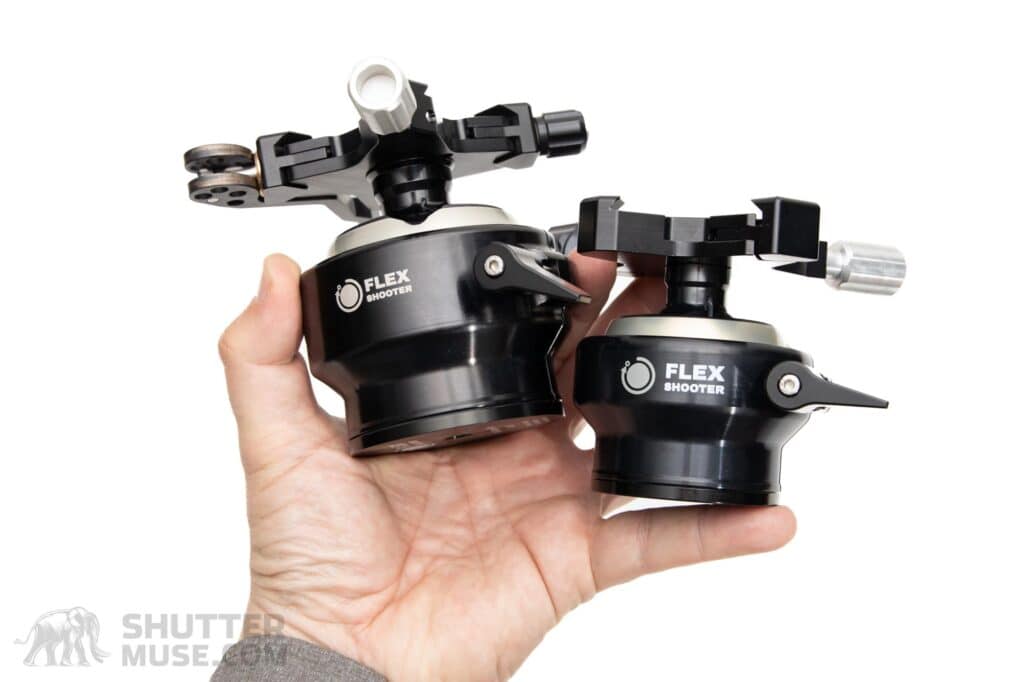
- Best For: A one-head-does-it-all-solution for people traveling with super telephoto lenses
- Pros: Combines several heads into one, lightening your load
- Cons: Expensive and not as smooth to pan and tilt as a gimbal
Flexshooter heads combine features of ball heads, 2-way heads, and gimbals into a single device. They use a double-ball design that allows you to level the head with the outer ball and then tilt and rotate the inner 2-way ball, ensuring a perfectly level horizon no matter where you point your lens. At the same time, a spring-loaded counterbalance operates inside the two-ball system to effortlessly support the weight of your camera. When properly balanced, you can let go of your camera without locking the head, thus providing the same “ready-to-go” benefits of a gimbal head.
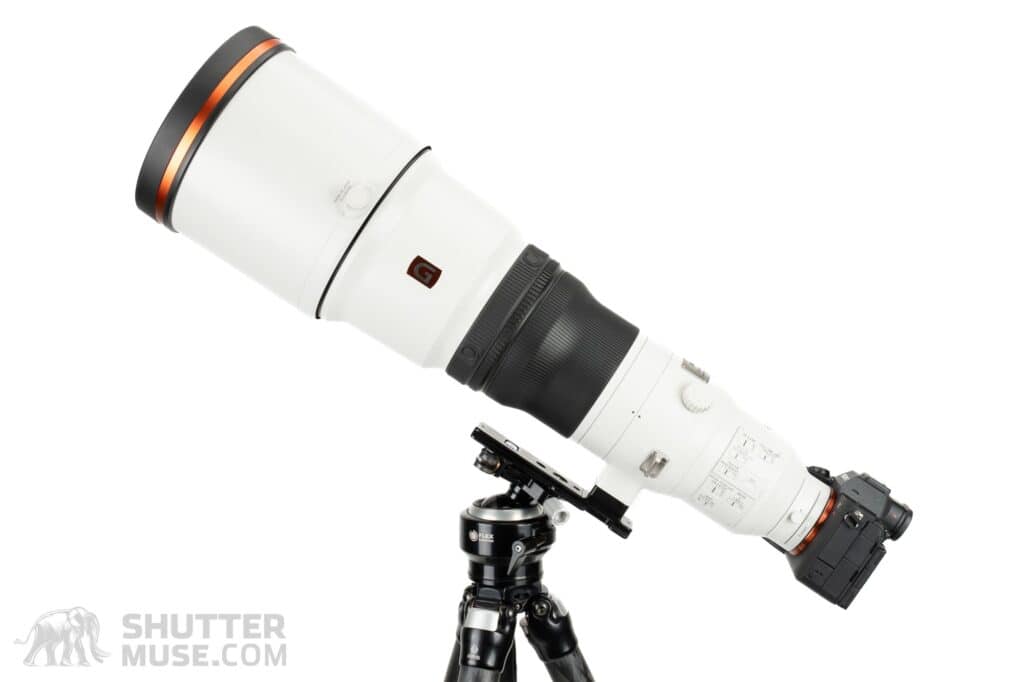
While Flexshooter is a brand and not a discrete category of tripod heads like everything else in this guide, it’s hard to classify them due to their unique features. They are becoming increasingly popular with nature photographers, who can effectively replace a ball head, gimbal, and leveling head with this single tripod head. If you want to know more about them, I encourage you to read my in-depth review of the Fexshooter tripod heads, where you’ll find all models compared and find out why I usually choose a Fexshooter as my preferred tripod head when I travel.
Where to Buy Flexshooters
- Flexshooter Pro – B&H Photo (US & Canada) / Amazon / Augenblicke Eingefangen (Europe)
- Flexshooter Mini – B&H Photo (US & Canada) / Amazon / Augenblicke Eingefangen (Europe)
- Flexshooter Extreme – B&H Photo (US & Canada) / Augenblicke Eingefangen (Europe)


